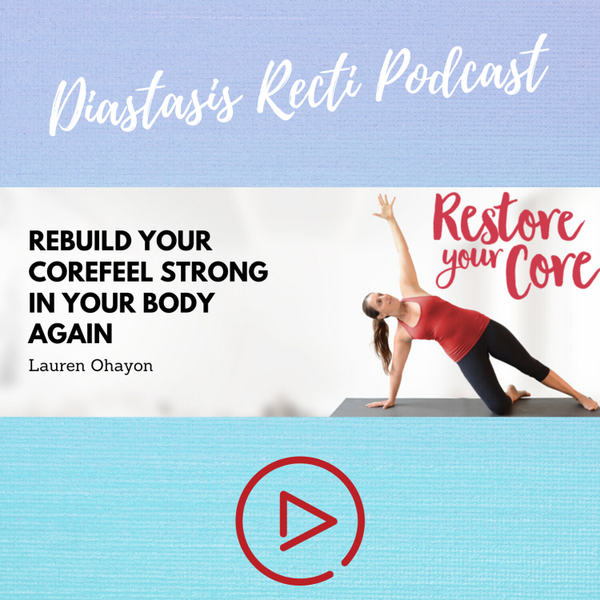
How to Strengthen Your Core
- S1E38
- 02:41
- February 19th 2021
Core exercises and workouts help strengthen the muscles in your abdomen, back, and your pelvic floor. In many cases, working out core muscles may aid in your ability to do physical activities, restore damaged muscle groups, and aid in load and weight lifting. However, there are many fitness gurus and exercise routines that encourage unhelpful and potentially damaging core exercises.
One of the scenarios I run into many times with my clients is that they are encouraged to build core strength through navel to spine exercises. They are taught that in order to fully engage in fitness culture, they must try to achieve a flat belly or toned abs in order to be healthy. That cannot be any further from the truth.
This is the heart of what I teach in the Restore Your Core program: navel to spine does not work. Arbitrarily pulling our navel in, tightening the core to do exercise does not rewire, re-pattern, remind our bodies of what they need to do all day long. And if you are working out 1-2 hours a day and doing a lot of navel to spine but then the other 12 hours a day of waking time, your core is not reflexively doing its job – then those 2 hours on the mat are not useful.
In this article, we seek to address the proper way to pursue a strong core rather than doesn't sacrifice function for sexiness.
How Long Does it Take to Restore Your Core?
I wish I had an insta solution for addressing Diastasis Recti, but unfortunately, I do not. Getting a functional core is a process that involves many things including alignment, breathing mechanics and finally, the right way to train using exercise. The whole goal is to train your body to react and respond appropriately to your movements and activities. (Restore Your Core program is based on this approach.)
Effective Core Exercises & Training
- Ensure you are not a belly breather. Belly breathing causes a lot of intra abdominal pressure and that can lead to a diastasis recti and pelvic floor dysfunction.
- Work on your posture and body alignment as both compromise your core.
- Stop sucking in your belly all day because that does not work.
Here is an alternate way to practice core engagement that doesn’t suck, suck, suck your belly in and it actually works. Try it:
Come to your hands and knees. Ensure that your spine has neutral curves: lower back has a slight arch and upper back is slightly rounded. Booty untucked gently. Look between your hands and imagine you have a cake between them with 100 candles. Inhale and exhale to slowly blow all 100 candles out. You should feel your belly lift away from the floor and tighten. That is your deep core.
Do the same thing sitting. Sit comfortably with a neutral spine. Imagine now you are blowing out a dandelion. Slowly exhale and feel how your core responds. Amazingly, these simple exercises are key to effective core training.
The next step is to get more and more complicated with the exercises so that each time your body needs support of your core – that exhale will direct the support mechanism to engage. The more you do that, again and again, and the harder and more progressive the exercises – the more reflexive your core will be. Your reflexive core will kick in for you for all of your activities because your deep internal support system will be back online.
Restore Your Core: Diastasis Recti and Pelvic Floor Talks
The Restore Your Core podcast is all about health and fitness for those struggling with Diastasis Recti or Pelvic Floor issues.
Lauren Ohayon makes videos, runs a thriving facebook group, and creates blogs that help people to feel better and reclaim their healthy bodies.
https://restoreyourcore.com/learn/diastasis-recti/
If you're too busy to read the blog then feel free to listen to the podcast! We hope to be a part of your core restoration journey.